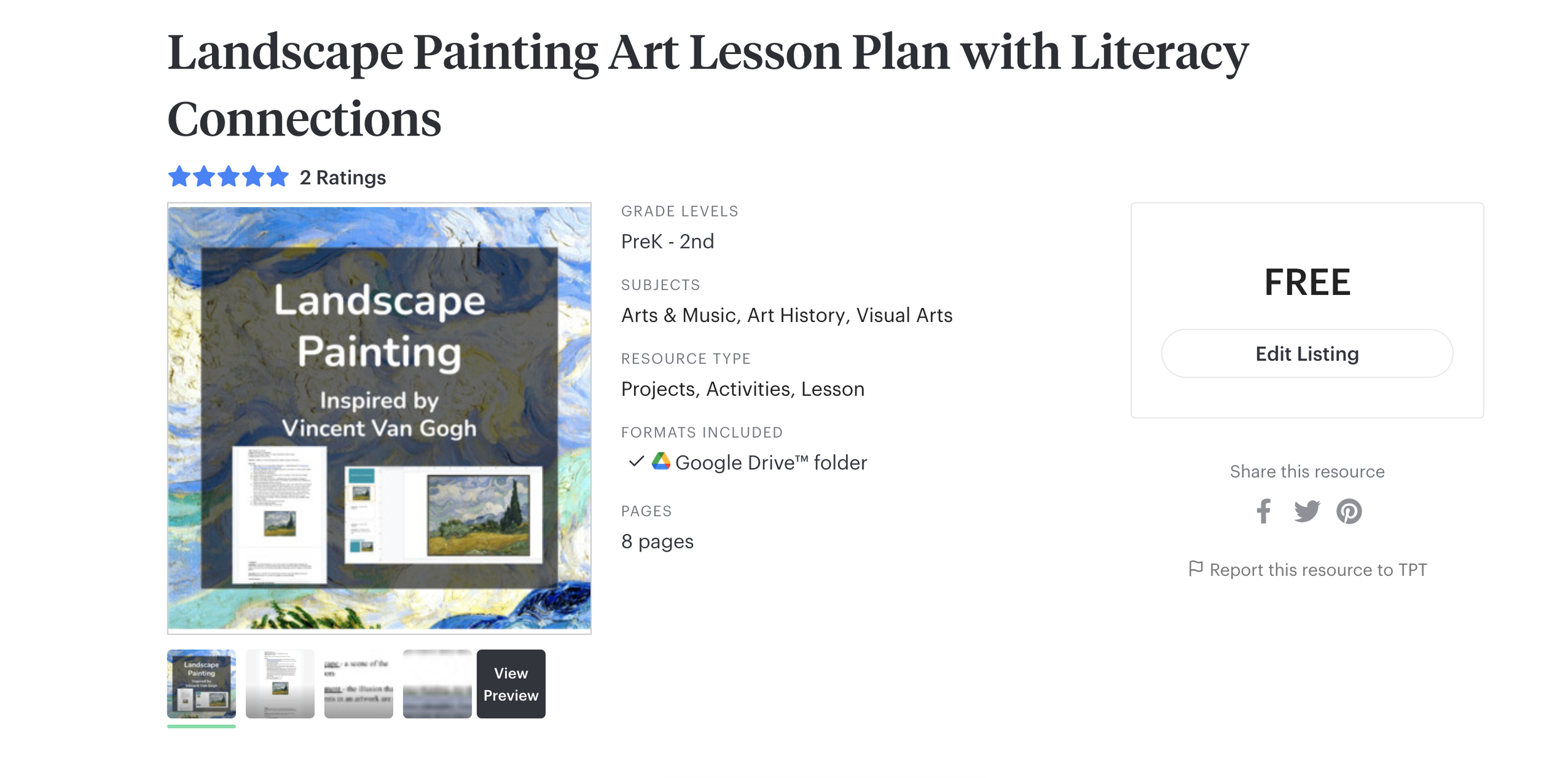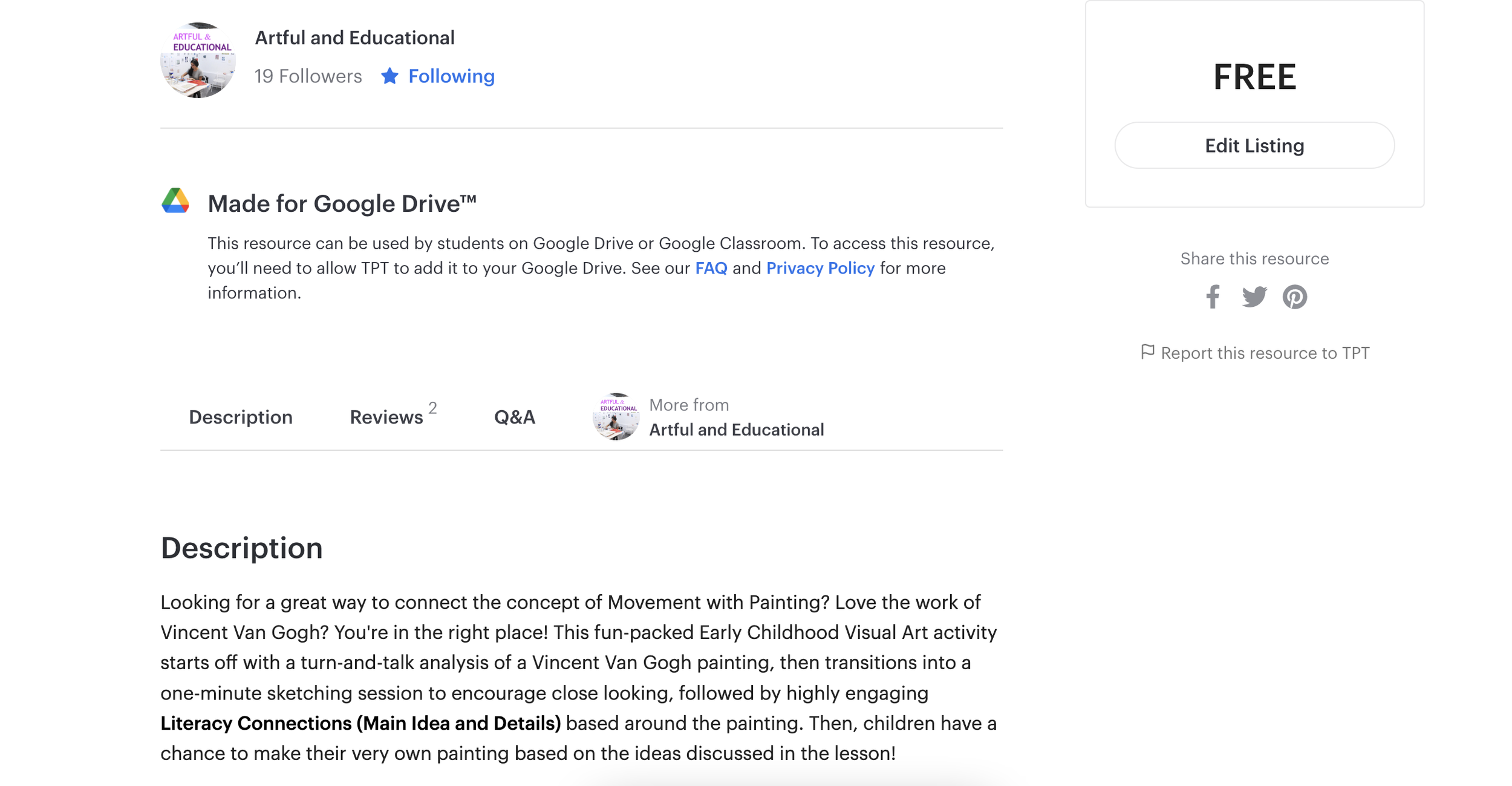Landscape Painting Art Lesson Plan with Literacy Connections
Are you an early childhood teacher looking for a great way to connect the concept of Movement with Painting? Do you love the work of Vincent Van Gogh? You're in the right place! I have designed a free art lesson plan, available for instant download on TpT.
My fun-packed Landscape Painting Art Lesson Plan with Literacy Connections starts off with a turn-and-talk analysis of a Vincent Van Gogh painting, then transitions into a one-minute sketching session to encourage close looking, followed by highly engaging Literacy Connections (Main Idea and Details) based around the painting. Then, children have a chance to make their very own painting based on the ideas discussed in the lesson!
This can be completed as a 'one-off' lesson with very young children, or expanded into multiple class sessions if you are looking for a long-term project for Upper Elementary. Additional Literacy Connections are offered for teachers who wish to spend some more time on Main Idea and Details.
The lesson could be conducted online (synchronously or asynchronously), or in person. I initially designed the lesson for in-person instruction, and later adapted it to better suit online learning. My 1st and 2nd Graders especially love this project, and have been able to achieve such convincing depictions of movement and rhythm in their paintings!
This resource includes:
1 Lesson Plan with Warm-Ups and Reflections
1 Slideshow with Art Vocabulary Terms, Main Idea and Details Chart
As a teacher with 15 years of working with children (and a lifetime of being an artist), I made sure this lesson plan incorporates everything you need for a successful lesson, including movement, literacy, and art historical connections, so your children learn about art while broadening their understanding of the world.
I hope this lesson brings your children (and you) much joy and curiosity!
Please leave a review on TpT or a comment below to let me know what you think!



